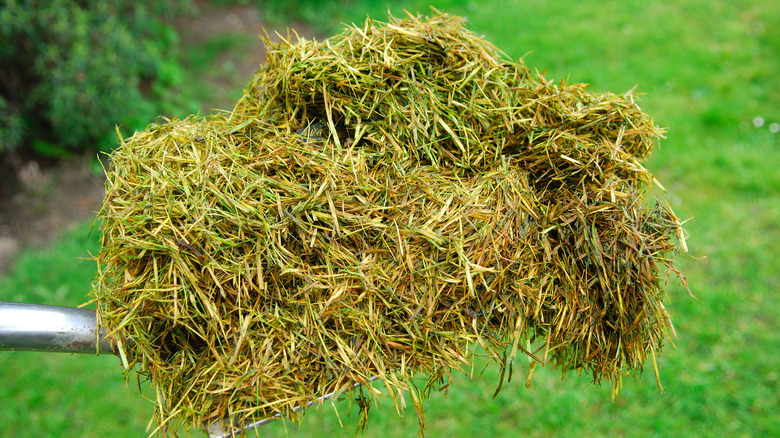As the name implies, grass clippings are the bits of grass sheared off by your mower. If you have a bagging attachment, you can capture those clippings to add to a compost bin or use in your garden. Mulching mowers also use clippings efficiently by shredding them so finely that they are immediately returned to the soil to decompose. This is an excellent way to naturally fertilize your lawn since grass is a significant source of nitrogen. Vegetable gardens also require plenty of nitrogen to nourish plants. It is the primary nutrient used by the plant to conduct photosynthesis.
Although grass clippings are helpful in the garden, there are right and wrong ways to use them. It may be tempting to just dump your mower’s bagging attachment straight in the garden, but that could cause problems. Here are a few tips for when to use grass clippings in your garden and situations in which it can cause more harm than good.
How to use grass clippings as mulch

The best time to use grass clippings as mulch is when they are dry. If you have ever tried to mow wet grass, you know how densely it can stick together. Applying fresh, wet grass clippings to the garden can actually suffocate the soil and create a stink — literally — as they decompose. Because of their high nitrogen content, grass clippings do well mixed with other types of mulch like straw, dry leaves, or pine needles. Unless you have a tiny garden and a massive lawn, getting enough grass clippings to get the weed control and moisture retention benefits from that source alone. Mixing grass clippings with mulch helps keep your garden weed-free while still feeding it. And each time you mow, you can add another thin layer of clippings to the top.
Even if your grass clippings have turned brown, they make a great mulch. Clippings lose most of their nitrogen as they turn brown, but they still work well for weed suppression and help improve soil structure when they are worked into the garden at the end of the season.
When you should not use grass clippings in your garden
Homeowners that keep a pristine lawn free of weeds by applying herbicide at any time of year should never add those grass clippings to compost or directly to the garden. While herbicides made specifically for use on turf grass do not affect the grass itself, they are developed to kill broadleaf weeds like dandelions and plantain. But these herbicides do not discriminate. They will cause herbicide damage to any plant not in the family of grasses they are developed to protect. That herbicide can linger on grass clippings long after trimming and can even contaminate soil and compost where those clippings are deposited. Long story short, if you use herbicide on your lawn, that grass is not suitable for the garden.
Another situation in which you can create a headache for yourself by tossing grass clippings in your garden is if they have seed heads. When your grass gets tall and matures, you notice long stalks with seeds that look like miniature strands of wheat. Those are, in fact, grass seeds, and you do not want to accidentally plant them in your garden. If your grass has gone to seed, you can toss those clippings to decompose in a compost bin — which will kill the seeds — or otherwise dispose of them.